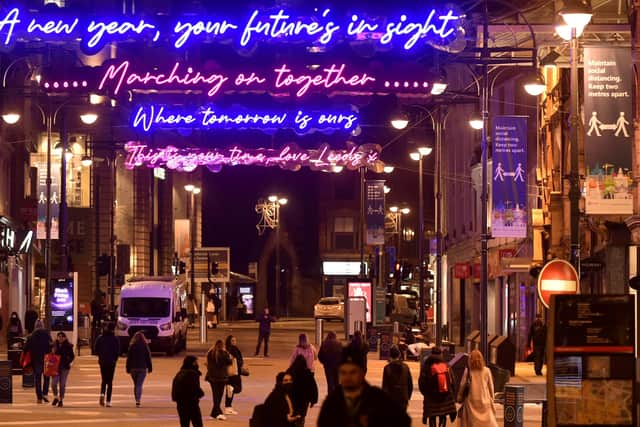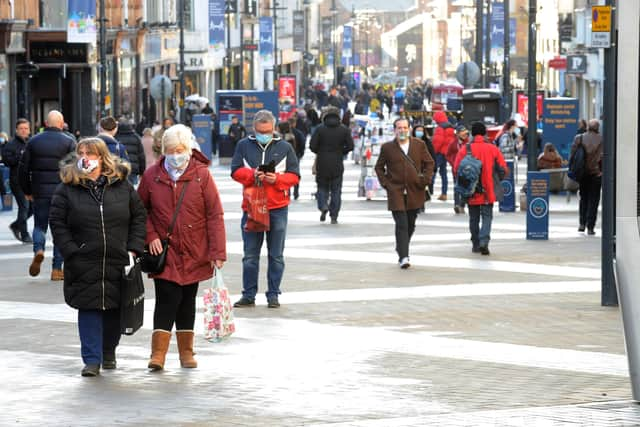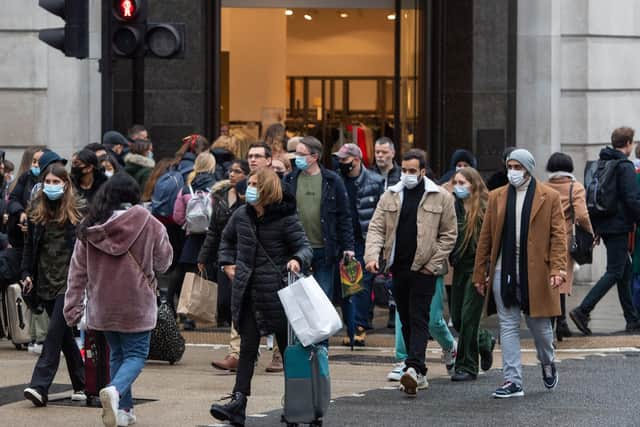Five ways to transform high streets and town centres – Kate Hardcastle
Many emerging trends, such as the demand for shopping online, greater appreciation of the outdoors, a desire to shop local and spending on experiences over material goods, have accelerated in 2020.
While the effects of some of these trends can be felt on high streets across the UK (vacancy rates are at a five-year high), we must remember the true potential of our great British high streets. They can be places to help loneliness, encourage activity and social interaction, boost wellbeing and bring our communities back together.
Advertisement
Hide AdAdvertisement
Hide AdBut they must evolve if they are to survive, and fast. Through my work as a global business and consumer consultant in places like the USA, Australia and the UAE, I’ve seen great examples of high streets abroad which have evolved to truly cater to the needs of their communities.


In Melbourne you’ll find skate parks, football fields, dentists and creches within the typical shopping areas and this is a prime example of high streets truly serving the people who use them. We must learn from this best practice whilst looking inwards at our communities and addressing what they actually need and want from their local high streets. Through my Access for All programme, I support UKactive in promoting health and activity within towns and cities and here are my thoughts on how we can ensure their survival in 2021.
1: Our high streets as places of inclusivity. There is huge scope for our town and city centre planners to address social opportunities. We have an isolation epidemic and must bring people together in spaces that are fit for purpose.
High streets need to be multi-functional and serve as places for everyone in society – places that schools and community groups can use on weekdays, and that the working population can use on evenings and weekends.
Advertisement
Hide AdAdvertisement
Hide AdWe have to build solutions around all the people who actually use and need them, creating spaces for people to connect, meet and share experiences.


2: Beyond retail. High streets must evolve as the world evolves. Consumers are increasingly aware of ethical and environmental issues and are selecting experiences over the purchasing of material goods. We must therefore examine their relevance to the experience economy and evolve them accordingly.
For UK high streets to become vibrant and successful again, we must reshape them as places we don’t just go to shop, work or dine, but as places we can go to work, live, exercise, play and use health and wellbeing services too. Let’s also not forget the importance of joy – we’ve needed it this year and our high streets can provide a conduit for bringing a little into our everyday lives, whether that’s through experiences, culture or simply being together.
3: Accessible for all. If our high streets are to evolve into centres for our communities to come together, they must offer the essential facilities – clean toilets, accessible changing areas, affordable and reliable transportation links and the reassurance of safety.
Advertisement
Hide AdAdvertisement
Hide AdWe must get these basics right and ensure the high street experience serves all our visitors, including the elderly, disabled and those with babies, children and pets.


Technology can enhance this – we should no longer see technology as a distraction, but as an enabler with, for example, local click and collect services or an online search tool for a dog- friendly cafe.
4: Our high streets must stand for something. 2020 saw us transform our homes into our offices, schools, gyms and even pubs. Now we need to transform the towns and cities we also call home, applying that same approach, with our high streets truly reflecting how we live our lives today.
We should embrace our urban beauty spots in the same way we appreciate our green spaces, combining exercise, arts, socialising and shopping as we gradually encourage visitors back to our town and city centres.
Advertisement
Hide AdAdvertisement
Hide AdLocal businesses are key in bringing entrepreneurial vibrancy and something different. Many leisure businesses operate from out-of-town sites but could offer taster sessions within centres to engage new customers.


For example, I’ve seen climbing walls set up in vacant shops, allowing children to try a new hobby, along with farmers markets in shopping centres and pop-ups featuring local artisans and microbusinesses. This showcasing of small businesses and events will help high streets forge their own identities and break away from the homogenised models.
5: Collaboration. These important changes require one thing – collaboration. We can’t achieve all of this by working in silos and must together form alliances across different sectors.
Our high streets can be a huge conduit in bringing people together, particularly our most vulnerable or isolated members of society. I’ve seen some great initiatives, such as a Yorkshire shopping centre hosting tea dances and exercise classes for older people with Age UK – these simple ways of working together can be most effective.
Advertisement
Hide AdAdvertisement
Hide AdIf we’re serious about saving our high streets, we must put collaboration at the top of the agenda and we must listen. Listen to those with a vested interest in our high streets. Listen to those stakeholders we never even knew existed. Listen to and learn from those leading change and doing things differently.
Then we must work together on evolving everything we do with regards to planning for the future of our high streets and our communities.
* Kate Hardcastle, aka The Customer Whisperer, is the UK’s leading ‘‘go-to’’ business expert on consumer insight. Visit www.insightwithpassion.co.uk for further details.
Support The Yorkshire Post and become a subscriber today. Your subscription will help us to continue to bring quality news to the people of Yorkshire. In return, you’ll see fewer ads on site, get free access to our app and receive exclusive members-only offers. Click here to subscribe.
Comment Guidelines
National World encourages reader discussion on our stories. User feedback, insights and back-and-forth exchanges add a rich layer of context to reporting. Please review our Community Guidelines before commenting.